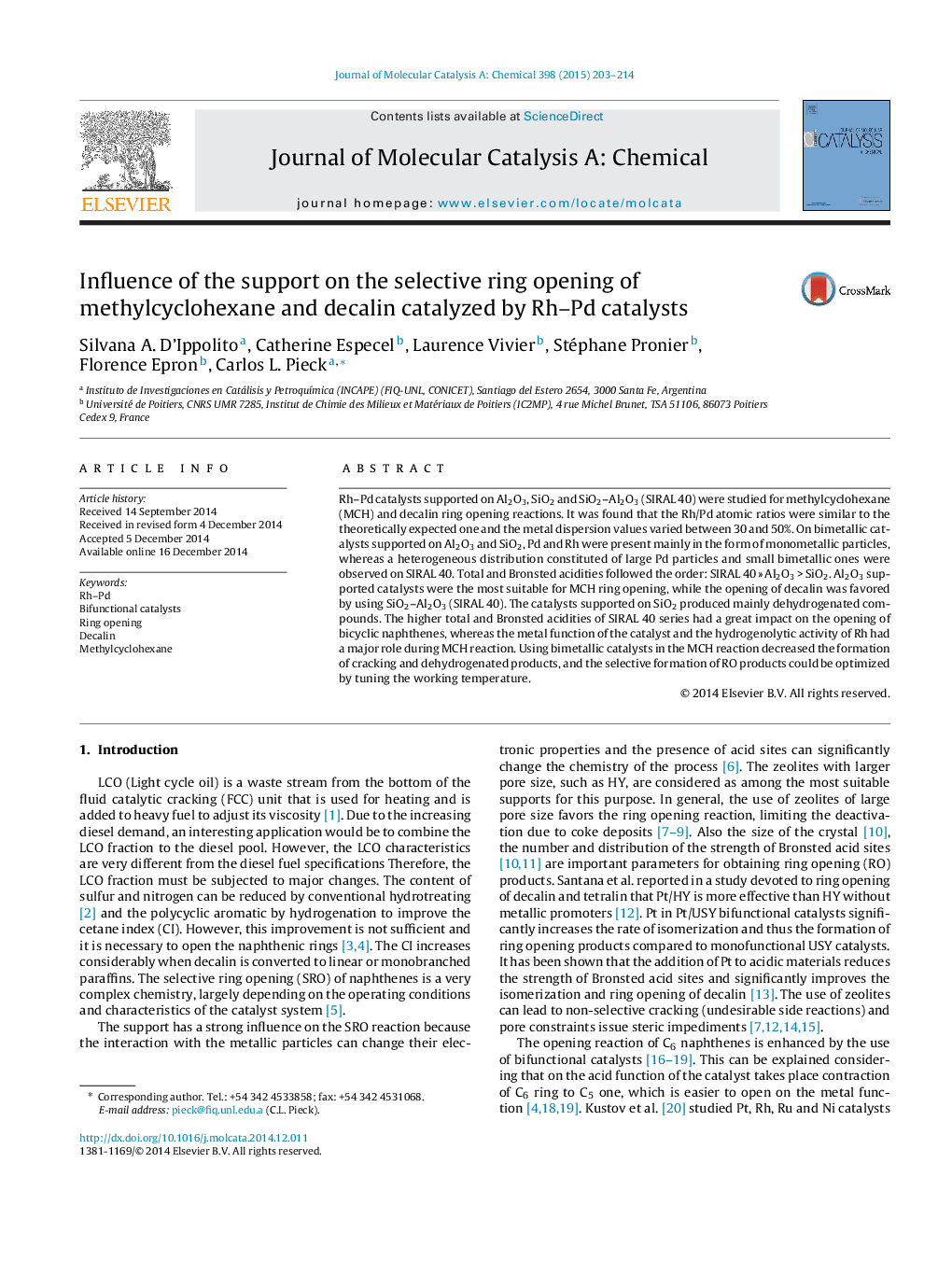| کد مقاله | کد نشریه | سال انتشار | مقاله انگلیسی | نسخه تمام متن |
|---|---|---|---|---|
| 65216 | 48386 | 2015 | 12 صفحه PDF | دانلود رایگان |

• Ring opening reactions by Rh–Pd supported on SiO2, Al2O3 and SiO2–Al2O3 were studied.
• Al2O3 supported catalysts were the most suitable for MCH RO reaction.
• The opening of decalin was favored by using SiO2–Al2O3 (SIRAL 40) as support.
• Total and Bronsted acidity had a great impact on the opening of decalin.
• Metal function and the hydrogenolytic activity of Rh have a major role during MCH RO.
Rh–Pd catalysts supported on Al2O3, SiO2 and SiO2–Al2O3 (SIRAL 40) were studied for methylcyclohexane (MCH) and decalin ring opening reactions. It was found that the Rh/Pd atomic ratios were similar to the theoretically expected one and the metal dispersion values varied between 30 and 50%. On bimetallic catalysts supported on Al2O3 and SiO2, Pd and Rh were present mainly in the form of monometallic particles, whereas a heterogeneous distribution constituted of large Pd particles and small bimetallic ones were observed on SIRAL 40. Total and Bronsted acidities followed the order: SIRAL 40 >> Al2O3 > SiO2. Al2O3 supported catalysts were the most suitable for MCH ring opening, while the opening of decalin was favored by using SiO2–Al2O3 (SIRAL 40). The catalysts supported on SiO2 produced mainly dehydrogenated compounds. The higher total and Bronsted acidities of SIRAL 40 series had a great impact on the opening of bicyclic naphthenes, whereas the metal function of the catalyst and the hydrogenolytic activity of Rh had a major role during MCH reaction. Using bimetallic catalysts in the MCH reaction decreased the formation of cracking and dehydrogenated products, and the selective formation of RO products could be optimized by tuning the working temperature.
Figure optionsDownload high-quality image (151 K)Download as PowerPoint slide
Journal: Journal of Molecular Catalysis A: Chemical - Volume 398, March 2015, Pages 203–214